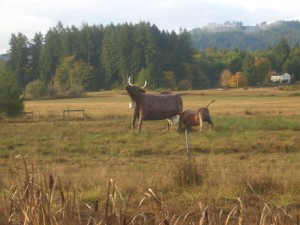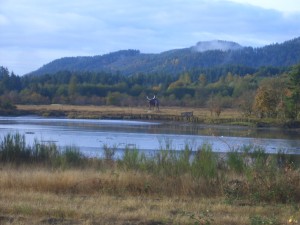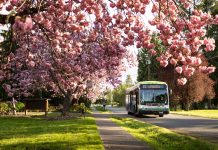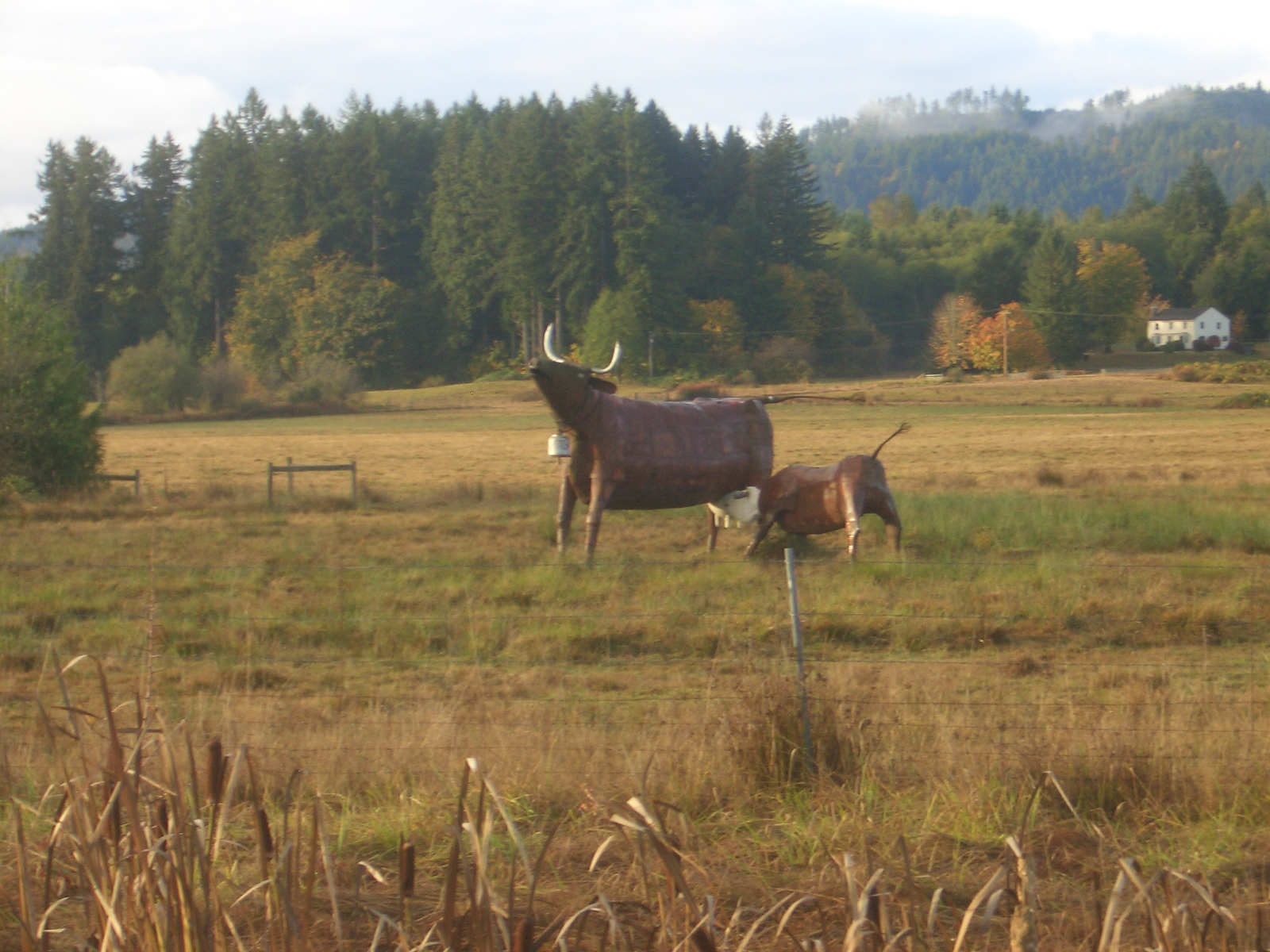By Doris Faltys
 I started my search for information concerning the cow sculptures off the side of Highway 101 near Mud Bay by trying to pull up the newspaper article written around the time of their appearance. Having no luck with search engines, I stopped in at the Blue Heron Bakery, a Mud Bay fixture, on the off chance the bakery folks might have the article tacked to a wall somewhere.
I started my search for information concerning the cow sculptures off the side of Highway 101 near Mud Bay by trying to pull up the newspaper article written around the time of their appearance. Having no luck with search engines, I stopped in at the Blue Heron Bakery, a Mud Bay fixture, on the off chance the bakery folks might have the article tacked to a wall somewhere.
 Evan Price, the owner, says that he remembers the article but he does not have a copy. I ask him if he knows anything about the sculptures. “They are on my landlord’s property,” says Evan “He is in his 90’s and I doubt he would talk about the sculptures and the artist wants to remain anonymous,” adds Price.
Evan Price, the owner, says that he remembers the article but he does not have a copy. I ask him if he knows anything about the sculptures. “They are on my landlord’s property,” says Evan “He is in his 90’s and I doubt he would talk about the sculptures and the artist wants to remain anonymous,” adds Price.
“Do you know who the artist is?” I ask.
“No, I don’t. He is a retired gentleman. Obviously a competent welder,” Price answers.
Microfiche at the Timberland Regional Library produces the article I am looking for, “Beefy pieces of art appear near highway,” found in section B-1 of the September 18, 2002 issue of The Olympian by Alma D. Sharpe. The article states that the artist wants, “to remain a mystery.” No answers to be found there at all.
Back in Mud Bay, at the Blue Heron Bakery I speak again with Price. “What else can you tell me about those cow sculptures?” I ask.
“The cows appeared in 2002. First the mom with the calf arrived, then later the bull, then at some point later, the other bull. Most people don’t even notice the fourth sculpture. It is so far back,” Price adds who comments that he neither saw the cows arrive nor the truck that delivered the sculptures.
“Do people ask about the sculptures when they stop in at the bakery?” I ask.
Price responds, “People ask about them from time to time. I try to tell people where the Blue Heron Bakery is. I’ll say we are located off Highway 101, near The Evergreen State College, Mud Bay, they draw a blank. Then I add ‘Do you know where the cows are?’ Then they say, ‘Oh yeah.’”
“I like that the artist used a propane tank for an udder,” Price adds. “The sculptures are folk art on a grand scale, an incredible land mark.”
 Mud Bay is an interesting place in addition to the cows. Here are a few of the reasons:
Mud Bay is an interesting place in addition to the cows. Here are a few of the reasons:
- It is the setting for local author Jim Lynch’s book The Highest Tide. (Jim stopped in at the Blue Heron for some baked goods as I was finishing my chat with Price.)
- Mud Bay is where Shipwreck Beads, the largest bead store in the world, got its’ start.
- The Blue Heron Bakery is one of the oldest whole grain bakeries in the Northwest.
- The Mud Bay Tide Flat Run happens every spring, a TESC Graduation challenge.
- The Squaxin Island Tribe archaeological dig, at the farm of Ralph and Karen Munro, has uncovered hundreds of artifacts from a centuries-old tribal fishing camp.
- Bald Eagles arrive there each fall. One day, two years ago, 82 were counted.
- Many years ago the Northern Lights were seen from the Blue Heron Bakery.
The cow sculptures add to the mystery that is Mud Bay. As Price says, “There is nothing finer than getting up with the sun coming up on the Mud Bay plain and seeing those gargantuan steel behemoths. It is surreal with the real cows underneath. They are a wonderful aesthetic addition to Mud Bay.”




















































